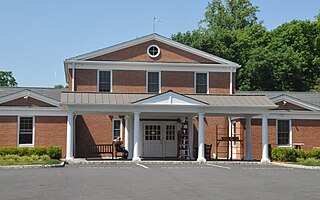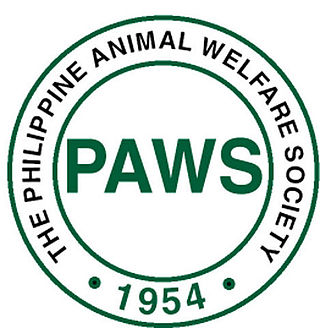Related Research Articles

The American Kennel Club (AKC) is a registry of purebred dog pedigrees in the United States. In addition to maintaining its pedigree registry, this kennel club also promotes and sanctions events for purebred dogs, including the Westminster Kennel Club Dog Show, an annual event which predates the official forming of the AKC, the National Dog Show and the AKC National Championship. The AKC is a non-member partner with the Fédération Cynologique Internationale. The AKC recognizes 200 dog breeds, as of 2022.

The Vizsla, also known as Hungarian Vizsla, Magyar Vizsla or Hungarian Pointer, is a dog breed from Hungary and belongs to the Fédération Cynologique Internationale (FCI) group 7, the Canadian Kennel Club (CKC) group 1, and the American Kennel Club. The Hungarian or Magyar Vizsla or Smooth-Haired Vizsla are sporting dogs and loyal companions. The Vizsla's medium size is one of the breed's most appealing characteristics. As a hunter of fowl and upland game, the Vizsla has held a prominent position among sporting dogs – that of household companion and family dog.

An assistance dog, known as a service dog in the United States, is a dog trained to aid or assist an individual with a disability. Many assistance dogs receive training from a handler or from an assistance dog organization.

A police dog, also known as a K-9, is a dog that is trained to assist police and other law enforcement officers. Their duties may include searching for drugs and explosives, locating missing people, finding crime scene evidence, protecting officers and other people, and attacking suspects who flee from officers. The breeds most commonly used by law enforcement are the German Shepherd, Belgian Malinois, Bloodhound, Dutch Shepherd, and Labrador Retriever. In recent years, the Belgian Malinois has become the leading choice for police and military work due to their intense drive, focus, agility, and smaller size, though German Shepherds remain the breed most associated with law enforcement.

A therapy dog is a dog that is trained to provide affection, comfort and support to people, often in settings such as hospitals, retirement homes, nursing homes, schools, libraries, hospices, or disaster areas. In contrast to assistance dogs, which are trained to assist specific patients with their day-to-day physical needs, therapy dogs are trained to interact with all kinds of people, not just their handlers.

Canines, Canis familiaris, perform many essential roles within society, most notably in the fields of assistance, therapy, detection, and protection. Falling within the field of detection, a search-and-rescue (SAR) dog is one trained to respond to crime scenes, accidents, missing persons events, as well as natural or man-made disasters. These dogs detect human scent, which is a distinct odor of skin flakes and water and oil secretions unique to each person and have been known to find people underwater, snow, and collapsed buildings, as well as remains buried underground. SAR dogs are a non-invasive aid in the location of humans, alive or deceased.

The Guide Dogs for the Blind Association, known colloquially as Guide Dogs, is a British charitable organisation that uses guide dogs to help blind and partially blind people. The organisation also participates in political activism for the rights of those with vision impairments.

The Seeing Eye, Inc. is a guide dog school located in Morris Township, New Jersey, in the United States. Founded in 1929, the Seeing Eye is the oldest guide dog school in the U.S., and one of the largest.
A psychiatric assistance dog or psychiatric service dog is a sub-category of assistance dog trained to assist their handler with a psychiatric disability or a mental disability, such as obsessive-compulsive disorder, post-traumatic stress disorder, schizophrenia, depression, anxiety, and bipolar disorder.
Guide Dogs for the Blind (GDB) is a guide dog school located in the United States, with campuses in San Rafael, California, and Boring, Oregon. It was founded in 1942 by Lois Merrihew and Don Donaldson to help veterans who had been blinded in World War II. Guide Dogs for the Blind has about 2100 Guide Dog teams across the United States and Canada.

Endal was a male Labrador Retriever in Britain whose abilities as a service dog and as an ambassador for service dog charitable work received worldwide news media coverage.

Guiding Eyes for the Blind is a non-profit school based in Yorktown Heights, New York that trains guide dogs to aid people who are visually impaired. It also operates a canine development center in Patterson, New York, and a training site in White Plains, New York. It was the first guide dog training school to be accredited by the National Accreditation Council for Agencies Serving the Blind and Visually Handicapped.
Brian Kilcommons is an American author and dog trainer. He is a protégé of Barbara Woodhouse, and the only North American to have studied under Woodhouse in Great Britain. Kilcommons is the author of pet training manuals. He is considered one of the most esteemed dog trainers in the US.

The Philippine Animal Welfare Society (PAWS) is a volunteer-based, non-government organization whose goal is to prevent animal cruelty through education, animal sheltering and advocacy, based in Quezon City, Philippines. It was founded in 1954 by Muriel Jay. PAWS believes that the creation of a more peaceful society starts with the widening of mankind's circle of compassion which includes animals, thereby envisions a nation that respects animals, practices responsible pet ownership and protects wildlife. The volunteer-based organization rehabilitates these animals in the hope of finding them new homes and a second chance at a good life. PAWS does not take in pets of other people, but only victims of cruelty or neglect where the animal offenders are charged with violation of the Animal Welfare Act in court.
Bonita M. Bergin is an American canine researcher. She is the inventor of the concept of the service dog. She is the founder and president of the Bergin University of Canine Studies and the founder of Canine Companions for Independence and Paws for Purple Hearts.
NEADS Inc. is an American 501(c)(3) nonprofit program that provides trained service dogs to people who have physical disabilities or who are deaf or hearing impaired; veterans with PTSD; and children with autism or other developmental disabilities.

In the United States, a courthouse facility dog is a professionally trained facility dog that has graduated from an accredited assistance dog organization that is a member of Assistance Dogs International. Such dogs assist crime victims, witnesses and others during the investigation and prosecution of crimes, as well as during other legal proceedings. Courthouse facility dogs also provide assistance to Drug Court and Mental Health Court participants during their recovery from drugs, alcohol, mental illness and posttraumatic stress disorder.
Freedom Service Dogs is a Denver, Colorado–based charitable organization devoted to training dogs as service dogs for people with disabilities that include multiple sclerosis, muscular dystrophy, Down syndrome, cerebral palsy, spinal-cord injury, PTSD, and more. The organization began a small-scale breeding program in 2019 to increase the number of people it could help.
Safe Humane Chicago is a nonprofit animal advocacy organization founded in 2008 by animal rights advocate Cynthia Bathurst. The nonprofit works to educate youth on animal safety and seeks justice for dogs that have been confiscated by law enforcement by placing them in foster care to later be adopted into new homes.
Mary Cortani is a United States Army veteran who's best known for founding her non-profit organization Operation Freedom Paws.
References
- 1 2 Derr, M. (2004). Dog's Best Friend: Annals of the Dog-Human Relationship. University of Chicago Press. pp. 309–311. ISBN 9780226142807.
- ↑ Dote, Alyx. "Local woman receives free service dog". KVOA. Archived from the original on April 19, 2017. Retrieved April 18, 2017.
- ↑ Bozzo, L. (2010). Service Dog Heroes. Enslow Publishers. ISBN 9780766031999.
- ↑ "Dogs and the Disabled: New Role". The New York Times . April 16, 1989. Retrieved June 28, 2015.
- ↑ "Nonprofit report on Lions Project for Canine Companions for Independence". Lions Project for Canine Companions for Independence. 2020.
- ↑ "Canine Companions for Independence, Henry Schein Animal Health Form Partnership to Support Volunteer Puppy Raisers and Their Veterinarians". The New York Times. 16 April 2015. Retrieved June 28, 2015.
- ↑ Jackson, Tim W. "Organization Offers Free Service Dogs for Veterans in Wounded Veterans Initiative". Paralyzed Veterans of America. Archived from the original on June 30, 2015. Retrieved June 28, 2015.
- ↑ "Service Dog Given to Wounded Vietnamese-American U.S. Army Captain". PR Web (Press release). 21 May 2012. Retrieved June 28, 2015.
- ↑ Beder, Joan (2012). Advances in Social Work Practice with the Military. Routledge. p. 165. ISBN 9781136789182 – via Google Books.
- ↑ "New Partnership Between PetSmart and Canine Companions for Independence Helps Wounded Military Veterans". MarketWatch. February 14, 2014. Retrieved June 28, 2015.
- ↑ "Study examines impact of service dogs on veterans with PTSD". Stars and Stripes . January 31, 2015. Retrieved September 11, 2015.
- ↑ "Canine Companions for Independence - Meet PacifiPuppy Foley". www.cci.org. Archived from the original on April 12, 2017. Retrieved April 11, 2017.
- ↑ "Breeding". CCI. Archived from the original on 2007-02-21. Retrieved 2007-01-08.
- ↑ "Breeding Program". CCI. Archived from the original on 2016-07-03. Retrieved 2016-06-28.
- ↑ Davis, Patricia (November 7, 1996). "A pup with a purpose". Washington Post. Retrieved June 28, 2015.
- ↑ "Canine Companions for Independence". Indianapolis Monthly . November 2000. pp. 107–108. Retrieved August 23, 2014.
- ↑ "Puppy-Raising". CCI. Archived from the original on 2007-01-18. Retrieved 2007-01-08.
- ↑ Zauzmer, Julie (March 17, 2014). "Service dog comforts children who have been abused". Washington Post. Retrieved June 28, 2015.
- ↑ Aron, Wendy (November 26, 2006). "ANIMALS; Canine Companions Help People Deal With Disabilities". The New York Times. Retrieved June 28, 2015.
- ↑ "Training". CCI. Archived from the original on 2007-03-07. Retrieved 2007-01-08.
- ↑ "About follow-up training". CCI. Archived from the original on 2007-03-08. Retrieved 2007-01-08.
- ↑ "Aspirations Beyond Guard Duty". The New York Times . November 13, 2006. Retrieved September 11, 2015.